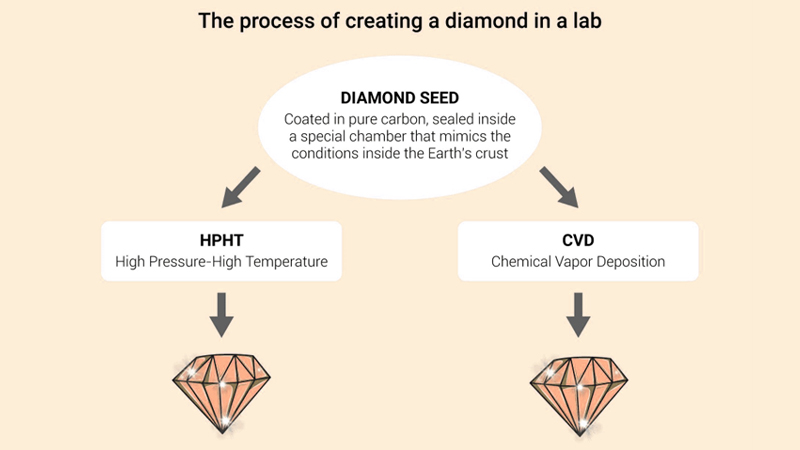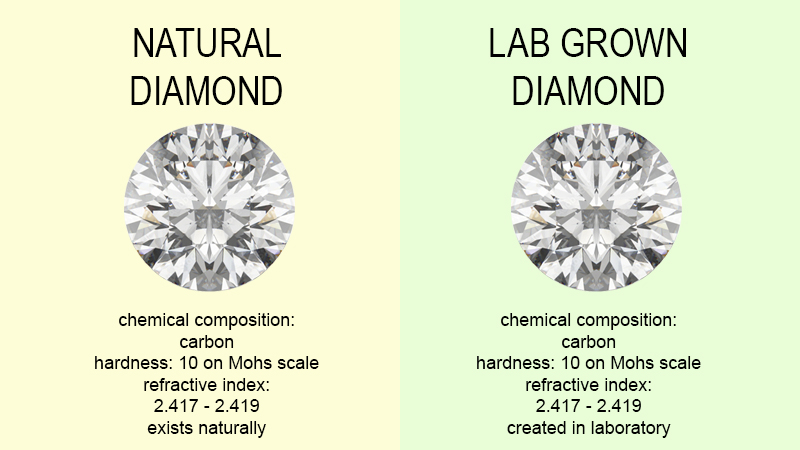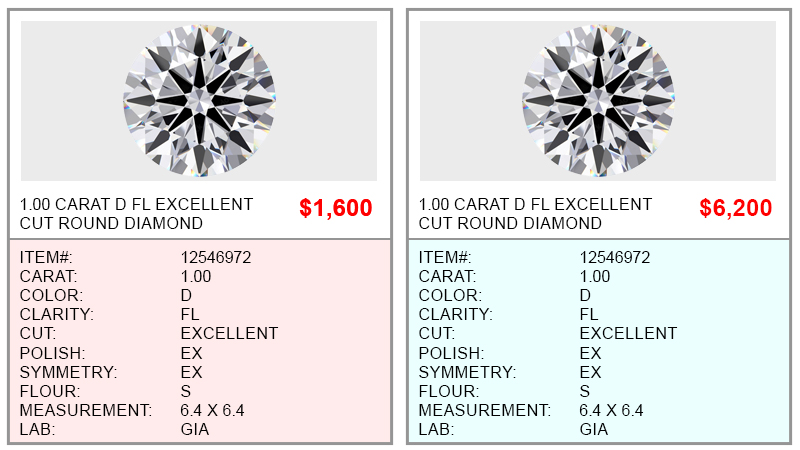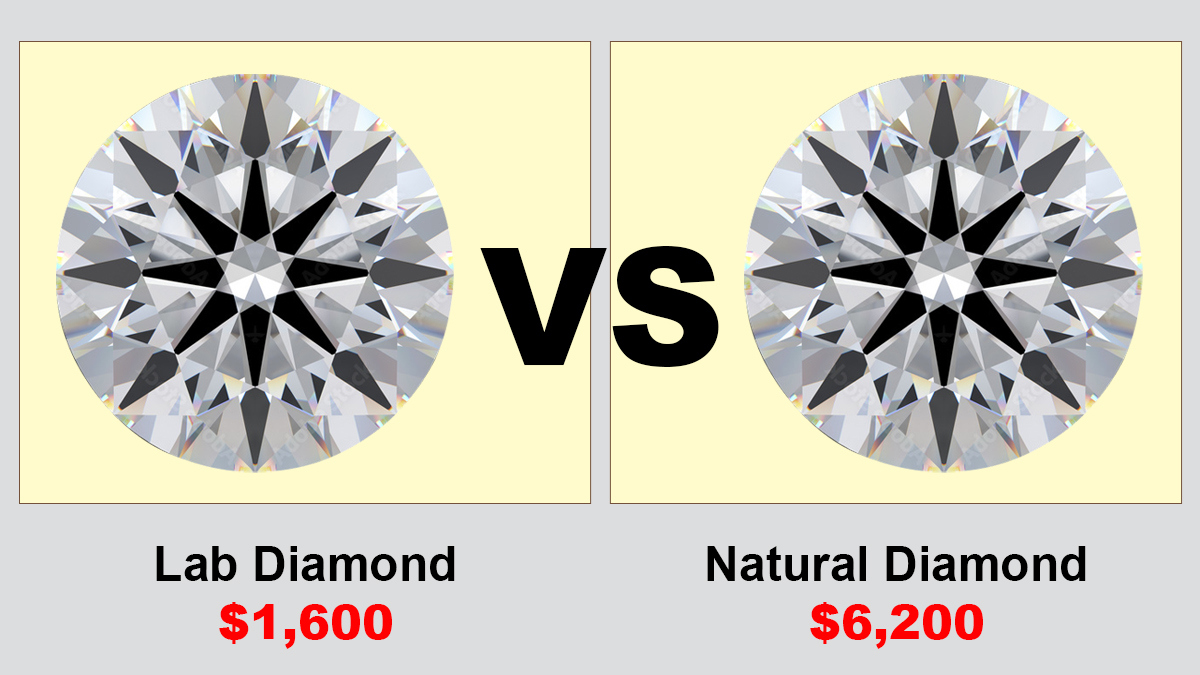Lab-grown diamonds are real diamonds. They are also known as man-made diamonds, lab created diamonds, and cultivated diamonds. They are grown in laboratories rather than on the earth's surface. These diamonds are the same as mined diamonds since they are formed of carbon and have the same atomic structure.
Technological advancements have enabled professionals to create diamonds that are chemically and physically identical to real diamonds. They are also visually indistinguishable. They include colorless and fancy colored diamonds. A diamond mine requires billions of dollars and a decade of labor to build.
It's worth because diamonds are extremely rare and valuable. The earth's crust is more than 100 miles deep. This is too deep for any mining to reach.
Over a billion years ago, things began to form in this area. The only identify on Earth with enough heat and pressure for diamonds to grow naturally is deep in the crust. The only diamonds that can be mined are those that have been brought up to the surface through ancient volcanoes.
Due to their scarcity, miners have to excavate 250 tons of dirt in order to locate a one-carat natural diamond. All of the material must be sifted and processed in order to identify the one shining bead in a haystack. It is astonishing that mined diamonds are not priced higher. This is despite the significant amount of time, energy, and money required to obtain them.
The one-carat-plus stones found each year are enough to fill a ball. Natural diamonds are limited in supply. This is because deep volcanic eruptions that brought them to the surface are rare.
Lab-grown diamond manufacturing, on the other hand, can go on indefinitely. Mined diamonds are more expensive than lab generated diamonds due to scarcity and high production costs.
How are Lab-grown Diamonds Made?

High-Pressure High Temperature (HPHT) or Chemical Vapor Deposition (CVD) are the two procedures used to manufacture these lab diamonds. HPHT (High Pressure High Temperature) is a process used to create diamonds.
It involves placing a small diamond seed in a chamber filled with carbon-rich gases. This chamber is then treated to high pressure and high temperature settings. This mimics the natural process of diamond formation.
HPHT lab-created diamond crystals have cubic and octahedral faces and are cuboctahedral in form. The crystals have been cut and polished. However, gemologists can still use a method to identify them as HPHT diamonds.
This method leaves atomic proof. HPHT produced diamonds may contain microscopic metallic inclusions from the catalyst. These inclusions can reveal the cubic structure of the diamond. Additionally, traces of boron may make the diamond electrically conductive.
A diamond shape seed is placed in a chamber. It is exposed to a plasma of carbon-rich gases.
These gases deposit carbon atoms onto the seed. This deposition results in the formation of a diamond. CVD diamonds make cubic crystals with a single growth direction.
The difficulty comes in growing diamonds thick enough to cut diamond and polish into jewels. CVD produced crystals can be taken from the growth chamber and repolished to continue growing thicker.
The largest CVD diamond ever grown weighs approximately 16 carats. CVD produced stones of 1-5 carats, on the other hand, are now widely available. The CVD procedure produces many center stone lab-created diamonds. Growers have better control over size and quality, which contributes to this result.
CVD diamonds are always Type IIa diamonds, meaning they are extremely pure and contain no nitrogen. That implies they are frequently quite clear. They can have a brown hue that can be improved by finishing their growth in an HPHT chamber.
Can a Jeweler Tell if a Diamond is Lab Grown?

Even an experienced jeweler may struggle to discern the difference between Earth Mined and lab diamonds. This is why lab-created diamonds must be labelled by sellers so that consumers know exactly what they're purchasing.
The girdle (the smallest part of the diamond at its edge) will be labelled with a microscopic number by vendors. The inscription is imperceptible to the human eye and ensures jewelers that they have received a lab-created diamond.
Initially, lab-created diamonds were only used for industrial purposes, but innovations led to its current use, which is jewelry. The technique for creating lab diamonds is now very precise. It is so similar to natural diamond clarity that even jewelers cannot tell the difference.
Initially, lab-created diamonds were only used for industrial purposes, but innovations led to its current use, which is jewelry. Now, the technique is very accurate. It is almost identical to a natural diamond. Even jewelers cannot tell through naked eye if it is lab-created or a mineral diamond.
Cost of 1 Carat Weight Lab Grown Diamond VS Natural Diamond

Diamond purchases are important. It is essential to know how to select the best stone and where to obtain the most value for your money. Diamond prices vary substantially based on the grade and where it was purchased.
A lab-grown diamond of 1 carat is one of the most common carats and cuts. The cost 1 carat lab grown diamond price can range from $400 to $4000.
This depends on the diamond's four Cs and where you purchase it. It is certain that lab-grown diamonds cost much less than mined diamonds. The cost difference is at least 60%.
The color grade quality of lab-grown and mined diamonds is the same. Better for the environment, too.
Natural diamond price per carat costs between $1,800 and $12,000 (depending on the current market situation), according to market pricing analysis. The price of a diamond is determined by criteria such as its cut quality, shape, color and clarity. The cut quality of a 1 carat diamond has the greatest influence on its price and beauty.
The price of lab-grown and natural diamond carat varies based on several factors. These include color, cut, clarity, and quality. It is important to keep in mind that diamond prices can fluctuate. This is influenced by the state of the market and the pricing strategies of individual sellers.
When buying a diamond, it is important to consider both the quality and the price. It is also important to do research and compare prices between different vendors.
Additionally, it is essential to verify the authenticity of the diamond. A reputable diamond seller should offer a certificate of authenticity for a diamond purchase. This will ensure that the diamond is genuine and of a certain quality.
It is important to recognize that the price of a diamond can fluctuate. This is due to changes in the market conditions. Therefore, it is important to stay up to date with the latest market trends and adjust pricing accordingly.
Conclusion

Lab-grown diamonds are a great substitute for natural diamond diamond for your engagement ring. If you desire a larger stone but have a limited budget, these diamonds are a great choice.
High quality Lab-grown diamonds are usually up to 50-60% less expensive. Like any other natural or lab-created gemstone, the resale value might fluctuate over time. Because lab-grown diamonds are a newer commodity on the market, future pricing is more unclear when compared to real diamonds.

